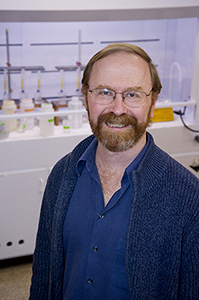
On March 11, 2011, a magnitude 9.0 earthquake occurred 80 miles off the coast of Japan and generated a series of tsunamis, the largest estimated to be over 30 feet tall. The tsunamis badly damaged the Fukushima Daiichi nuclear power plant, eventually causing four of the six reactors there to release radiation into the atmosphere and ocean.
Many people have been concerned with the fate of the radioactive material released into the environment, and how it might impact the ecosystem, including whether it poses a threat to public health and safety, even as far away as the west coast of North America.
“Levels of any Fukushima contaminants in the ocean will be many thousands of times lower after they mix across the Pacific and arrive on the West Coast of North America some time in late 2013 or 2014. This is not to say that we should not be concerned about additional sources of radioactivity in the ocean above the natural sources, but at the levels expected even short distances from Japan, the Pacific will be safe for boating, swimming, etc.” — Dr. Ken Buesseler, Woods Hole Oceanographic Institution.
To learn more about the fate of radioactive emissions, including human consumption of fishes, please visit this web site.
To learn more about the tsunami and its impacts to the western US, visit these web sites: CeNCOOS Overview and SIMoN tsunami marine debris.
The states, EPA and FDA are the operational lead agencies conducting radiation monitoring. NOAA is not monitoring for radiation, but is tracking marine debris sent adrift by the 2011 tsunami. http://marinedebris.noaa.gov/tsunamidebris/faqs.html
For air radiation monitoring, please contact the EPA:
Julia Valentine
EPA Public Affairs
Office: 202-564-0496
valentine.julia@epa.gov
EPA’s RadNet system, which monitors the nation’s air, drinking water, precipitation, and pasteurized milk to determine levels of radiation in the environment is here: http://www.epa.gov/radnet/ and http://www.epa.gov/japan2011/index.html
For seafood safety, please contact the FDA:
Theresa Eisenman
FDA Office of Media Affairs
Office: 301-796-2805
theresa.eisenman@fda.hhs.gov
This is the FDA’s latest Import Alert: http://www.accessdata.fda.gov/ms_ia/importalert_621.html
For monitoring in your state, please contact:
Alaska
Ty Keltner
Alaska Department of Environmental Conservation
907- 465-5009
ty.keltner@alaska.gov
Radiation information: http://dec.alaska.gov/eh/fss/Food/radiation_news.html
Washington
(Health related questions and radiation protection)
Tim Church
Washington Department of Health
360-236-4077
Timothy.Church@doh.wa.gov
…and…
Donn Moyer
Washington Department of Health
360-236-4076
Donn.Moyer@doh.wa.gov
Oregon
Kim Lippert
Oregon Emergency Management
503-378-2911 ext. 22283
Kim.lippert@state.or.us
Radiation information: http://public.health.oregon.gov/Preparedness/Pages/04-2012JapanDebris.aspx
California
Wendy Hopkins
California Department of Public Health – Office of Public Affairs
916-650-6864
Wendy.Hopkins@cdph.ca.gov
Radiation information: http://www.cdph.ca.gov/programs/Pages/RHB-RadReport.aspx
Hawaii
(General inquiries, she may refer to a specific subject matter expert)
Laura Leialoha Phillips McIntyre
Hawaii State Department of Health Environmental Planning Office
808-586-4337
Laura.McIntyre@doh.hawaii.gov
Canada
Health Canada Media Relations Office
613-957-2983
FAQs: http://www.bccdc.ca/healthenv/Radiation/JapanFAQ/default.htm